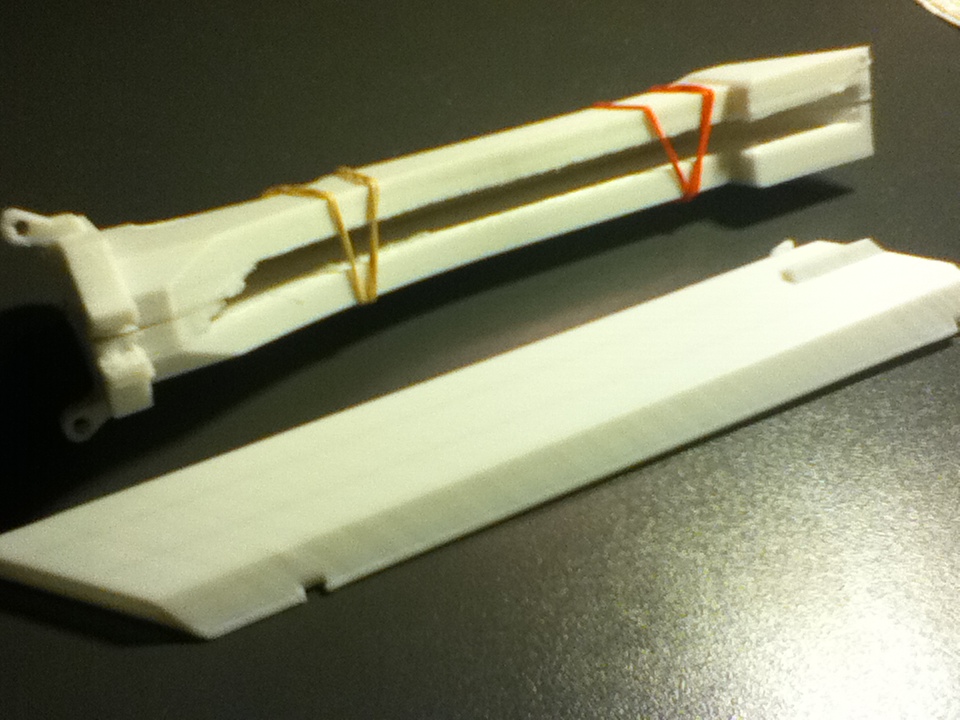I am making a part that needs to come apart, so I don't want to use glue or similar adhesives. I saw an article about printing snap-fit pieces, but it seems like you would need a lot of expertise to make it work well. Does anybody know of an easy way to non-permanently attach PLA parts, while still maintaining a sturdy connection?
EDIT: (more detail about specific project)
I need to attach plastic to plastic, in a pretty small surface area. This is a prop knife/sword in which the "blade" retracts into the handle.  For the prototype I printed the handle in two halves lengthwise, which I do not want to do for the final product. I want to print as much of the handle in one piece as possible. Because I need to get the blade into the handle (and remove it for working on parts, painting, etc) I need part of the handle to detach. I am thinking that the front bit (examined more closely below) would be the best place to detach.
For the prototype I printed the handle in two halves lengthwise, which I do not want to do for the final product. I want to print as much of the handle in one piece as possible. Because I need to get the blade into the handle (and remove it for working on parts, painting, etc) I need part of the handle to detach. I am thinking that the front bit (examined more closely below) would be the best place to detach.  As the wall thickness is about 1/4 in, there is not a whole lot of room to work with. However, I remain hopeful that there is a way to attach it such that it will remain securely together and retain the "blade" properly.
As the wall thickness is about 1/4 in, there is not a whole lot of room to work with. However, I remain hopeful that there is a way to attach it such that it will remain securely together and retain the "blade" properly.
Thanks for the help so far.